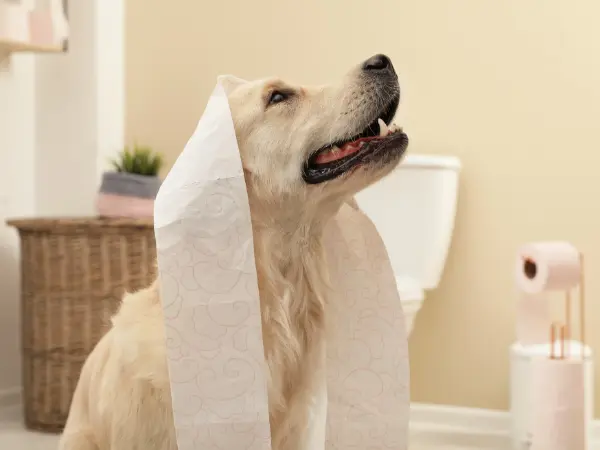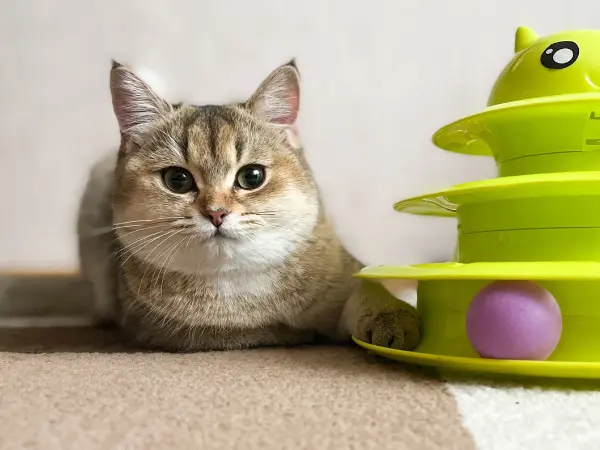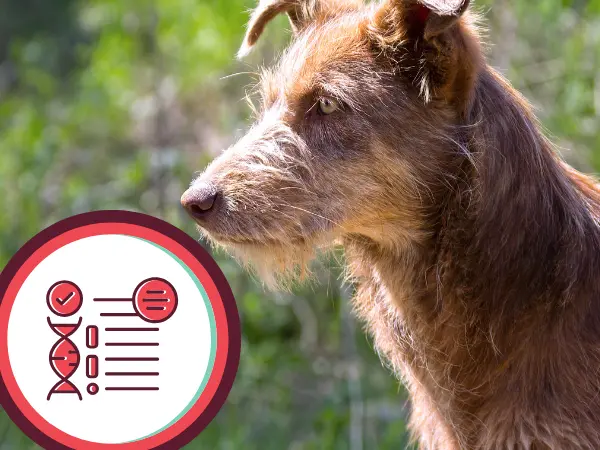Cats are known for their excellent grooming habits, spending hours each day licking their fur to keep it clean and healthy. Shedding is a natural part of this process. However, excessive cat shedding can sometimes be a cause for concern, leading a pet parent to worry about a cat shedding a lot.
The Sploot Veterinary Care team has put together this comprehensive guide on cat shedding. Read on to learn how to recognize when a cat is shedding too much (beyond normal, expected shedding) — and how to stop a cat from shedding.
Overview
- Shedding is natural for cats, as their old or damaged hair is replaced by new growth.
- Excessive cat shedding can be triggered by seasonal changes, allergies, stress, and other factors.
- It is always best to consult a veterinarian if your cat is experiencing excessive and/or unexplained shedding.

Cat Shedding Overview
Cat shedding refers to the natural process by which cats lose their old or damaged fur and replace it with new growth. Some cats shed a lot while other cats don’t shed as much.
Do All Cats Shed?
Yes, all cats shed to some extent. Shedding is a natural and necessary process that helps cats maintain healthy skin and coat. However, the amount of shedding can vary greatly depending on breed, age, health, and environmental conditions.
Which Cats Shed More?
Some cat breeds tend to shed more. The following cat breeds have either long or fluffy coats, making them more likely to shed more or be moderate or heavy shedders:
- Himalayan - long-haired cat, prone to heavy cat shedding and matting
- Persian -long-haired cat, prone to heavy cat shedding and matting
- Ragdoll - long-haired cat, prone to moderate cat shedding and matting
- Ragamuffin - medium-length coat, prone to moderate cat shedding
- Siberian - long-haired cat, prone to moderate cat shedding
- American Bobtail - can be short-haired or long-haired, prone to matting if the fur is long, prone to moderate cat shedding
- Maine Coons - can have long- or medium-length fur, prone to moderate cat shedding
Although all of the above breeds are expected to shed more, they can shed even more due to seasonal changes, certain health conditions, skin diseases, allergies, and stress.
Note: If you own any of the above cat breeds (or similar), we highly recommend monitoring your cat’s shedding patterns; seek veterinary advice if you notice your cat is shedding a lot compared to their usual shedding.
What Cats Don't Shed?
All cats shed to some extent. However, some cats shed less than others. They are considered ‘minimal shedders’ or ‘low shedders’.
Though these cats are typically considered hypoallergenic (due in part to their relatively lower rates of cat shedding) it’s important to note that no cat is 100% hypoallergenic since fur is not the only source of cat allergies in people — in addition, even low shedding cats and ‘hairless’ cats still shed.
Some examples of cats that don’t shed as much as other cats include the following:
- Sphynx - looks hairless but still has fine fur, minimal cat shedding
- Cornish Rex - very short, curly coat, minimal cat shedding
- Devon Rex - very short coat, has minimal cat shedding
- Singapura - short, fine coat, minimal cat shedding
- Tonkinese - short, fine coat, low cat shedding
- Burmese - short, sleek coat, low cat shedding
- Bengal - short, luxurious coat, low cat shedding
- Russian Blue - short, dense coat, low cat shedding
Note: Though the above cat breeds shed less, it is still possible to establish a healthy baseline for normal shedding. We encourage pet parents to note their fur baby’s normal shedding patterns and to look closely at symptoms like excessive itching or scratching, as well as visible changes to the cat’s coat or skin. Consult a veterinarian if you notice any of these signs.

Why is My Cat Shedding So Much?
Earlier we talked about how breed can influence why a cat is shedding a lot. Along with breed predispositions, other factors affect why cats shed a lot more than usual. These factors include:
1. Seasonal Shedding
Pet parents may notice increased shedding during specific seasons, particularly spring and autumn. This is particularly noticeable in double-coated breeds like Maine Coons and Persian cats. However, all cats can experience seasonal shedding.
So what is seasonal shedding in cats? During the spring season, cats shed their heavier winter coat in preparation for warmer weather. Meanwhile, during the autumn season, cats shed their summer coat so that it can be replaced with a winter coat, in preparation for colder weather.
2. Allergies in Cats - Seasonal, Food, & Fleas
Allergies in cats can cause them to have increased shedding, itchiness, and dandruff. Allergies in cats may also produce other symptoms like excessive scratching, ear infections due to increased sebum production, and/or coughing and wheezing.
There are three common sources of allergies in cats: seasonal air-borne particles, certain foods, and fleas. The common allergic triggers are as follows:
- Seasonal allergies in cats (spring allergy in cats, autumn allergy in cats) — pollen, dust mites, and mold spores.
- Food allergies in cats — chicken, beef, fish, or seafood; and
- Flea saliva.
Note: If a cat has seasonal shedding that may coincide with seasonal allergies, it can be helpful to look at other symptoms of allergies like excessive itching, coughing, and wheezing. In any case, we recommend contacting a vet to get any suspected allergies in cats diagnosed.
3. Age
When cats reach their senior years (~10 years of age), they may not be able to groom themselves like they used to — primarily because of possible mobility issues. Because older cats cannot groom themselves as effectively, they may appear to shed more.
→ Learn more - Caring for Senior or Older Dogs & Cats [A Vet-Approved Guide]
4. Stress & Anxiety
Cats are sensitive creatures, and stress or anxiety can manifest in various ways. Changes in the cat's environment, such as moving to a new home, the introduction of a new pet, or even changes in routine, can all cause stress and lead to excessive shedding.

5. Skin Issues
As mentioned earlier, fleas can cause increased shedding if they trigger flea allergies in certain cats. However, both fleas and ticks can cause increased cat shedding in another way: by causing itchiness. Flea bites and tick bites are itchy and this leads to overgrooming, which can result in hair loss for the affected cat.
→ Learn more - 7 Flea & Tick Medicines for Cats [Treatment & Prevention]
Another common skin condition that can cause increased cat shedding is ringworm in cats. As the ringworm fungus infects a cat’s skin, this produces symptoms like hair loss and circular patterns of baldness or broken hairs.
Note: Ringworm in cats can be transmitted to humans — if you notice ringworm symptoms in cats, book an appointment with a vet clinic promptly. And if you notice ringworm symptoms in people, please consult a physician.
6. Dietary Factors
A poor diet lacking essential nutrients can affect the health of a cat's coat and skin, leading to increased shedding. Cats require a balanced diet rich in protein, vitamins, and minerals to maintain a healthy coat.
7. Health Issues
Common conditions such as hyperthyroidism and diabetes can affect a cat’s skin and coat — excessive cat shedding is one of the possible, observable symptoms these systemic health issues produce.
If cat shedding co-occurs with other symptoms like lethargy, hyperactivity, and weight loss, make sure to consult a veterinarian.
Additionally, some neurologic conditions may cause your cat to over-groom, and it may appear as though your cat is excessively shedding. In any case, we recommend consulting a veterinarian to rule out health-related reasons behind excessive cat shedding.
How to Stop a Cat From Shedding
While it's impossible to eliminate shedding in cats entirely, there are several steps pet parents can take to help reduce excessive shedding and keep their cat's coat healthy:
1. Regular Grooming
Brushing your cat regularly helps to remove loose fur (especially during cat shedding season). Make sure to choose a brush appropriate for your cat's coat type and make grooming sessions a positive experience by offering treats and praise. Cats may also need baths if their fur becomes soiled.
- → Learn more - Cat Care Routine For a Healthy & Happy Cat [Vet-Approved Guide]
- → Learn more - 7 Best Cat Shampoos: Moisturizing Soothing, & More [Vet Approved]
2. Balanced Diet with Omega 3
Ensure your cat is eating a high-quality diet that meets their nutritional needs. We highly recommend cat parents feed their fur babies AAFCO-certified cat food as their main source of nutrition. Cat-friendly human food can also be given as treats or pet food toppers.
Additionally, omega-3 fatty acids may also help reduce shedding in cats by improving skin health and promoting a shiny, well-conditioned coat.
→ Learn more - Fish Oil for Cats [Omega 3]: 5 Vet Picks, Benefits & Side Effects
3. Stress Management
Minimize stressors in your cat's environment and provide plenty of opportunities for mental and physical stimulation. Bonding activities for cats such as cat games, interactive toys, and puzzle feeders can help alleviate stress in cats. Furthermore, having an enriching environment for cats is also helpful.
3. Regular Vet Check-ups
Schedule regular veterinary check-ups or wellness exams to monitor your cat's overall health and address any underlying medical issues that may be contributing to excessive shedding.
Veterinarians can also rule out allergies in cats and provide recommendations for the most suitable cat food for your cat — along with supplements or to support your cat's coat and skin health.

Final Thoughts on Cats Shedding a Lot
Cat shedding is a natural and normal process for all cats, but excessive shedding can sometimes indicate underlying health issues that need to be addressed.
By understanding the reasons why cats shed and taking proactive steps to manage shedding, pet parents can help keep their cats healthy, inside and out.
All-in-One Veterinary Care for Cats at Sploot Vets
If you’re wondering why your cat is shedding a lot — or looking to rule out possible dietary deficiencies, allergies, and health conditions, we are always here to help!
Sploot Veterinary Care provides all-in-one vet care—with primary care, urgent care, and emergency vet services under one roof. We provide top-notch care, with serene clinic environments and fear-free methods to help feline fur babies feel as welcome as possible. Visit us in one of our convenient vet clinic locations in Denver, Chicago, and Colorado Springs. Our doors are open 365 days a year, with extended clinic hours.
Book an appointment online or through your mobile pet care companion, the Sploot Vets app. We accept same-day appointments as well as urgent drop-off appointments.
As always, we’re with you every pounce of the way!






